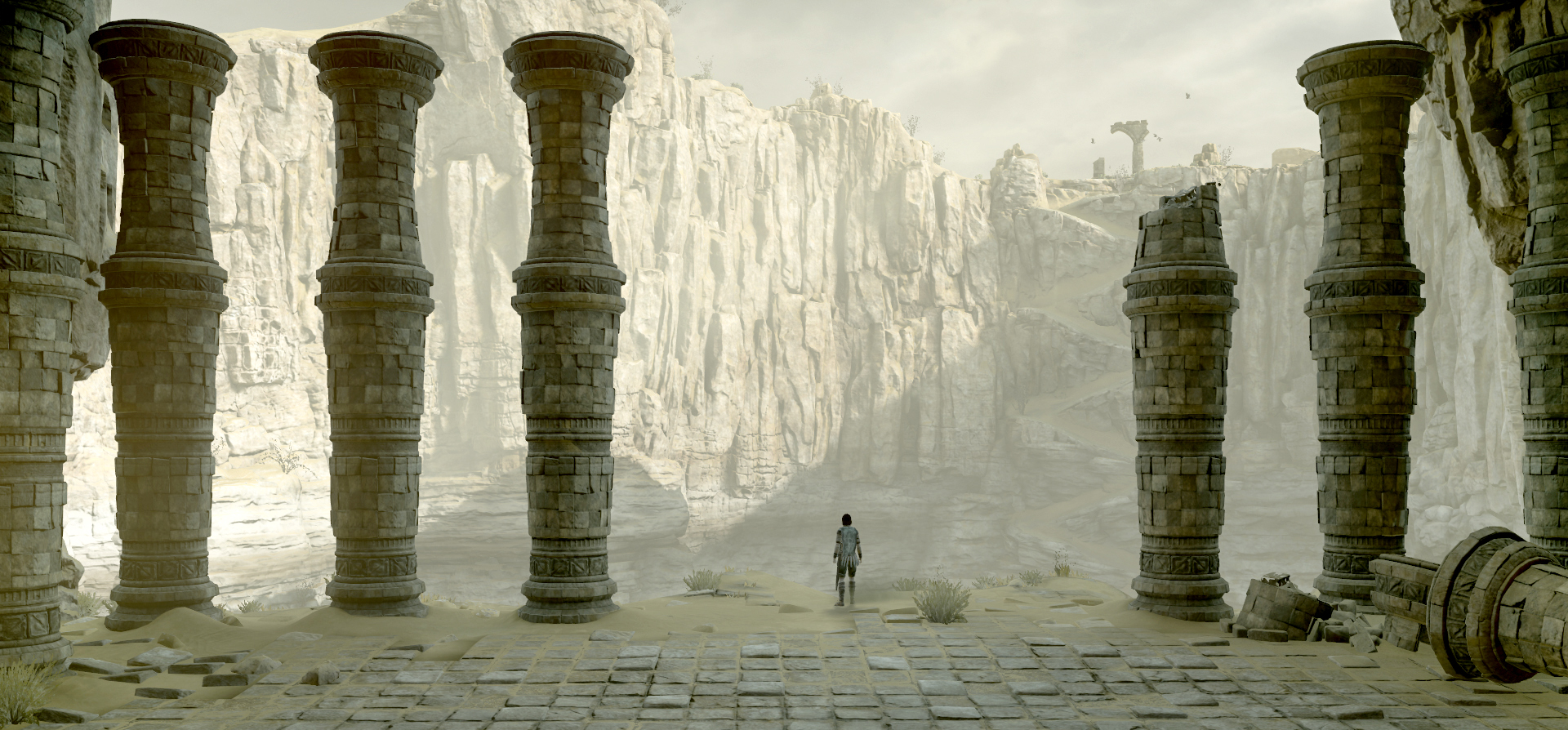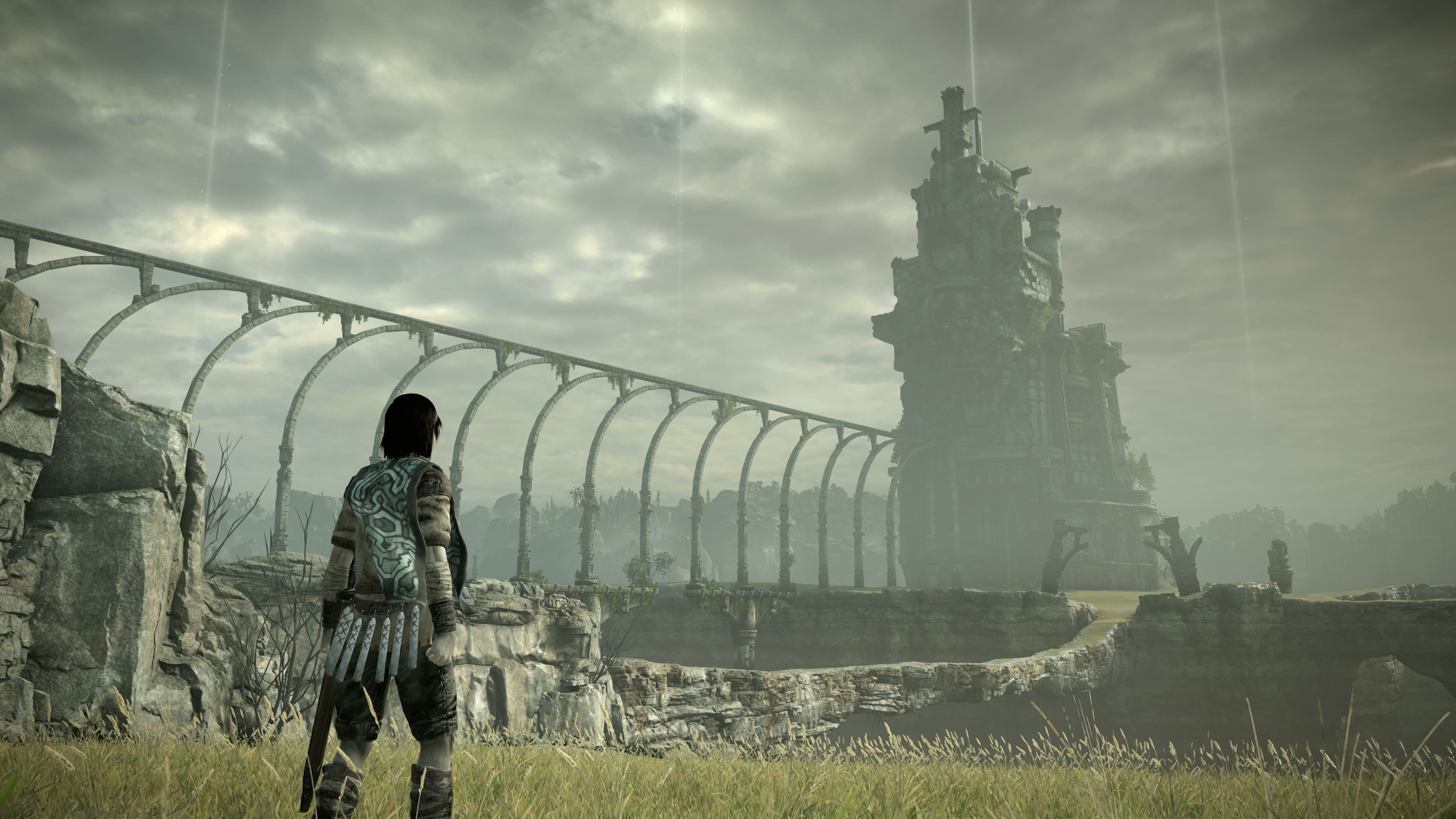Shadow of the Colossus Remake Review
Does this artistic masterpiece hold up to the scrutiny of the 4K era? Here's our review.
Release Date: February 6, 2018Platform: PS4Developer: Bluepoint Games, SIE Japan StudioPublisher: Sony Interactive EntertainmentGenre: Action-Adventure
I’ve often heard people refer to Shadow of the Colossus as “Exhibit A” in the games as art debate. It’s never been hard to understand why.
When Shadow of the Colossus was originally released in 2005, it left an impact similar to the one the game’s hulking behemoths impart with their every step. Team Ico’s spiritual successor to the phenomenal – yet somewhat overlooked – 2001 title, Ico, cast players as a wanderer who is trying to resurrect a young girl by slaying the great colossi that wander the land.
That may sound like a simple and tired story, but that’s only because it kind of is. If you just take the game’s back of the box description as the complete story, though, you’re missing the point entirely.
Shadow of the Colossus distinguishes itself from a legion of similar fantasy-like titles that have come before by virtue of its reliance on minimalism. We really don’t know that much about the wanderer’s quest based solely on what the game outright tells us. Plot details are slowly revealed throughout the game, but you never feel like the game is in a rush to ensure that you understand exactly what’s going on.
The reason that approach works as well as it does is that there are still traditionally epic elements of the game that leave you with the lingering impression that there is actually quite a lot to take in despite the lack of traditional storytelling. Nowhere is that more evident than when you encounter one of the game’s wandering colossi.
Get a Free Trial of GameFly on Us!
Many people who played Shadow of the Colossus when it was released will tell you that their first battle with a colossus is among their favorite moments in gaming history. That’s due partially to the sheer scale of the creatures – you really get the impression you are but an ant to them – but it has more to do with the moral implications of these battles.
You see, none of the game’s colossus boss battles involve the creatures aggressively initiating combat. Instead, you often must trigger the fight by using your bow and arrow or sword. That tiny detail eventually leads to the realization that these seemingly terrifying creatures are really majestic wonders who have likely been peacefully wandering this world for generations.
That realization is the crux of the game’s considerable emotional presence. Shadow of the Colossus makes you feel like a true villain in a way that games which openly cast you as a villain struggle to do. Because you don’t know much about your hero or their motivations, you’re sometimes left to assume their quest is a righteous one. If that’s the case, then why do you feel as if you’re depriving the world of something beautiful for largely selfish reasons?
The moral ambiguity of Shadow of the Colossus’ central quest has been dissected by just about every who has played it, yet, we really haven’t reached a true consensus regarding the game’s overall message. Is this a story about environmentalism? A narrative about the perils of what we consider to be true love? An epic journey that criticizes a generation’s willingness to abandon the old ways for largely selfish reasons? That lingering argument is a testament to the game’s brilliant use of minimalism as both a blank canvas for several ideas and a fully-realized masterpiece.
However, Shadow of the Colossus crowning achievement may just be its minimalistic visuals and sound design.

This is where the improvements of the PlayStation 4 remake come into play. The original Shadow of the Colossus was heralded as arguably the best looking game of its era – it’s still an incredible looking title – but it was clearly hindered by technical limitations of that era. Its animations were revolutionary, yet their innovations made certain frame-by-frame flaws that much more evident. The original game’s washed-out style felt appropriate, but you were still left feeling like it was only utilized because there was no viable alternative.
This PlayStation 4 remake addresses all of those issues. The animation featured in this remake is arguably flawless. The visuals have been cleaned-up so that you can clearly see every vibrant detail of the game’s word. Meanwhile, the original title’s ambitious scale has been left unaltered except when it could be improved upon. Simply put, this PlayStation 4 remake is arguably the best looking game of this modern generation. It’s certainly the one title we’d recommend you turn to when you’re looking to showcase your new 4K set-up.
The game’s music and sound are even better. While much of Shadow plays out in relative silence, the game’s sparse tracks are among the best in gaming history. The music is epic in a traditional sense, but it impressively manages to enhance that overwhelming sense of loneliness despite its triumphant tones. Here again, the remake does an excellent job of just improving what came before as opposed to messing with something that already works. As such, this is the definitive way to experience Shadow of the Colossus’ soundtrack outside of, perhaps, that excellent vinyl release.
What we have in the PS4 Shadow of the Colossus remake, then, is a masterclass in visual, audio, and narrative design that can single-handedly convince you that much-maligned business of video game remakes is entirely justified. This is the definitive version of one of gaming’s greatest artistic triumphs. However, as I was playing Shadow of the Colossus, I couldn’t help but feel that the people who have long argued that this game is the greatest example of games as art have got it all wrong. Instead, it’s more accurate to say that Shadow of the Colossus is the greatest example of traditional art as a game that we’ve ever seen.
That’s not necessarily a compliment. You may have noticed that until this point, we haven’t really talked about how Shadow of the Colossus plays as a video game. For the most part, your interactive experience with this game consists of wandering some lavish landscapes in search of the next colossus, battling said colossus, and occasionally engaging in a bit of treasure hunting via the game’s optional modes.

There’s no mistake, though, that Shadow’s gameplay is all about the boss battles. The level of creativity that went into imagining how players will need to fell these fantastic beasts cannot be overstated. In essence, each boss fight is a puzzle. However, they still manage to invoke that simple, yet classic, boss fight feeling of combating some great villain that takes up ¾ of your television screen and demands the absolute best from you. These are breathtaking encounters that have yet to be truly topped in terms of boss battles that make you feel as if you are battling true gods as a mere mortal.
Unfortunately, my time with this remake confirmed a criticism that those who were brave enough to find fault in Shadow of the Colossus upon its release were known to invoke: there just isn’t a lot of actual game here. You can beat Shadow of the Colossus in 6-8 hours your first time through. That’s not inherently a bad thing, but if you trim that down to the time spent battling colossi – by far the gameplay highlight – you’re talking about a 2-3 hour game.
The rest of your time is mostly spent navigating from boss fight to boss fight while occasionally dealing with the game’s odd pathfinding issues. Your horse will get stuck in the woods for no apparent reason. Your use of the grapple and pull system never feels quite as enjoyable when climbing cliffs as it does when scaling a colossus. Improvement have been made across the board – swimming is much easier, jumping feels more accurate, and aiming is far better than it was in the original version of the game – but these improvements don’t address the lingering deficiencies in the core experience.
For years, fans of this game have argued that these flaws are a byproduct of the things the game is trying to emphasize. They say that if the moment to moment gameplay was more compelling, then the narrative might not feel as lonely and foreboding.
That was a somewhat reasonable argument, but unlike many of the elements of Shadow of the Colossus, it is not one that has stood the test of time. In the years since Shadow of the Colossus’ original release, we’ve seen games like The Witcher 3 populate an open-world with more narrative than anyone thought was ever possible. We’ve seen Breath of the Wild turn large landscapes into organic playgrounds. We’ve seen Dark Souls marry minimalist storytelling and compelling gameplay in revolutionary ways.
Shadow of the Colossus is a piece of art in video game form. What it isn’t, though, is “Exhibit A” in the games as art debate. Not anymore. It lost that title when a new generation of games came along and showed how gameplay can be used as a vehicle for a kind of art exclusive to games.
Still, you absolutely should play the Shadow of the Colossus PS4 remake if you’re a fan of the original or someone who has only heard about the game via the praise of those who consider it to be a mythical experience. Even its flaws are a reminder that we’ve come pretty far in the art of game design largely because games like Shadow of the Colossus forced us to reconsider the possibilities of the entire medium.
Matthew Byrd is a staff writer.
